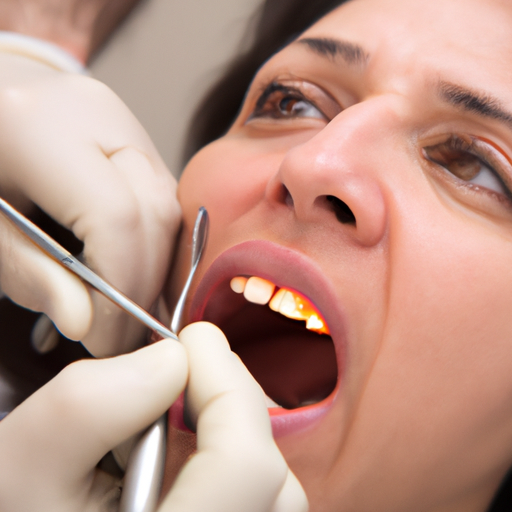Tooth removal, also known as extraction, is a common dental procedure that involves the removal of a tooth from its socket in the jawbone. While the thought of having a tooth pulled may seem daunting, it is often necessary to maintain good oral health and prevent further complications. In this article, we will explore the different aspects of tooth removal, including its diagnosis, symptoms, and causes. Additionally, we will delve into the various treatment options and procedures available for dental extraction. Finally, we will discuss prevention techniques and alternative solutions to tooth removal. Whether you are experiencing tooth pain or simply curious about this dental procedure, this article will provide you with a comprehensive understanding of tooth removal and its related aspects.
1. Understanding Tooth Removal: Diagnosis, Symptoms, and Causes
Tooth removal, also known as tooth extraction, is a dental procedure in which a tooth is removed from its socket in the jawbone. This procedure is usually undertaken when a tooth is severely damaged or decayed and cannot be restored through other dental treatments such as fillings or root canals. Additionally, tooth removal may be necessary in cases of overcrowding, impacted wisdom teeth, or to prepare for orthodontic treatment.
Diagnosing the need for tooth removal begins with a thorough examination by a dentist. The dentist will assess the condition of the tooth and its surrounding structures, using X-rays if necessary to get a clear picture of the tooth’s position and any potential complications. Common symptoms that may indicate the need for tooth removal include severe tooth pain, swelling, infection, or a tooth that is loose or cracked beyond repair.
Several causes can lead to the need for tooth removal. The most common cause is tooth decay, which occurs when bacteria in the mouth produce acids that erode the tooth’s protective enamel. If left untreated, decay can progress to the point where the tooth becomes structurally unsound and must be extracted. Similarly, gum disease, which is characterized by inflammation and infection of the gums, can also contribute to tooth loss if not properly managed.
In some cases, tooth removal may be necessary due to trauma or injury. Accidents or sports-related incidents can cause significant damage to teeth, resulting in fractures or dislodgment that cannot be repaired. Additionally, impacted wisdom teeth, also known as third molars, often require extraction. These teeth can become trapped beneath the gumline, causing pain, infection, and potential damage to neighboring teeth.
While the thought of tooth removal may be daunting, advancements in dental techniques and anesthesia make the procedure relatively painless. Depending on the complexity of the extraction, a dentist may use local anesthesia to numb the area around the tooth or opt for sedation to ensure the patient remains comfortable throughout the procedure. Once the tooth is removed, the dentist will provide post-operative care instructions to promote healing and minimize discomfort.
2. Dental Extraction: Treatment Options and Procedures
Dental extraction, also known as tooth removal, is a common dental procedure performed by dentists to remove a tooth from its socket in the jawbone. There are various reasons why a tooth may need to be extracted, ranging from severe decay and infection to overcrowding or damage due to trauma.
When it comes to treatment options and procedures for dental extraction, dentists consider several factors such as the tooth’s condition, its location, and the patient’s overall oral health. There are two main types of dental extraction: simple extraction and surgical extraction.
Simple Extraction:
Simple extraction is usually performed on teeth that are visible in the mouth and can be easily accessed by the dentist. This procedure is typically done under local anesthesia, which numbs the area around the tooth. The dentist then uses an instrument called an elevator to loosen the tooth from its socket and gently removes it using forceps. Simple extractions are commonly used for teeth that are decayed, damaged, or loose.
Surgical Extraction:
Surgical extraction is a more complex procedure that is required for teeth that cannot be easily accessed or are impacted, meaning they are partially or fully trapped beneath the gum line. This type of extraction is often performed by oral surgeons or dentists with specialized training. Surgical extraction may involve the use of local anesthesia or general anesthesia, depending on the complexity of the case and the patient’s comfort level.
During a surgical extraction, the dentist or oral surgeon makes a small incision in the gum tissue to access the tooth. In some cases, it may be necessary to remove a small amount of bone around the tooth or divide it into sections for easier removal. Once the tooth is extracted, the dentist stitches up the incision to promote proper healing.
Aftercare and Recovery:
Following any type of dental extraction, it is crucial to follow the dentist’s instructions for aftercare and recovery. This typically includes biting down on a gauze pad to control bleeding, applying ice packs to reduce swelling, and taking prescribed pain medications or antibiotics if necessary.
In the days following the extraction, patients
3. Prevention and Alternative Solutions to Tooth Removal
Prevention and Alternative Solutions to Tooth Removal
While tooth removal may sometimes be necessary, there are several preventive measures and alternative solutions that can help maintain oral health and potentially avoid the need for extraction. Here are some strategies to consider:
1. Good oral hygiene practices: Proper oral hygiene is crucial in preventing tooth decay and gum disease, the most common causes of tooth extraction. Brushing your teeth at least twice a day with a fluoride toothpaste, flossing daily, and using mouthwash can help remove plaque and bacteria, reducing the risk of tooth decay and gum infections.
2. Regular dental check-ups: Regular visits to the dentist for check-ups and cleanings are essential for maintaining good oral health. Dentists can identify early signs of dental problems and treat them before they progress to a point where extraction becomes necessary. Additionally, professional cleanings help remove stubborn plaque and tartar buildup that cannot be removed through regular brushing and flossing.
3. Dental restorations: In some cases, tooth removal can be avoided by restoring the damaged tooth. Dental restorations such as fillings, crowns, inlays, or onlays can repair teeth affected by decay, fractures, or other issues. These treatments aim to preserve the natural tooth structure while restoring its functionality and aesthetics.
4. Root canal treatment: When the inner pulp of a tooth becomes infected or inflamed, a root canal procedure may be an alternative to extraction. This treatment involves removing the infected pulp, cleaning and disinfecting the root canals, and sealing them with a filling material. Root canal therapy can save a severely damaged or infected tooth, allowing it to remain in the mouth and function properly.
5. Orthodontic treatment: In some cases, overcrowding or misalignment of teeth can lead to the need for tooth extraction. However, orthodontic treatment, such as braces or aligners, can help correct these issues and create space for all teeth to fit properly in the dental arch. By aligning the teeth correctly, orthodontic treatment can often eliminate the

